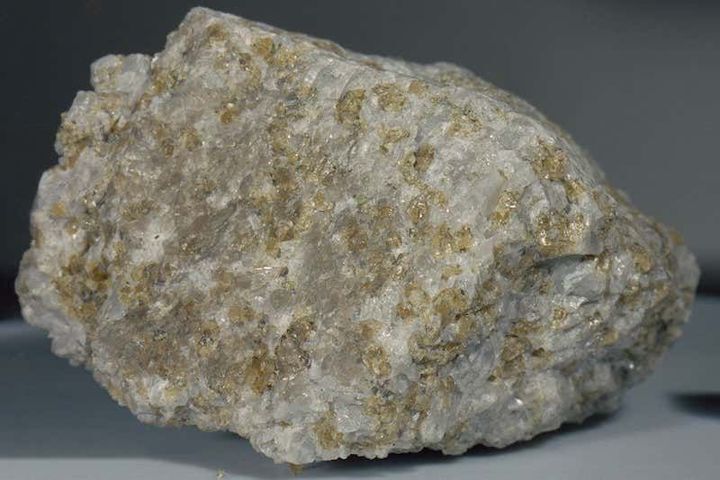17.12.2021

An image of the Apollo 17 moon rock troctolite 76535. (Image credit: NASA/Johnson Space Center)
A lunar rock brought to Earth nearly half a century ago is revealing new information about the moon's complex history.
NASA's Apollo 17 mission left the moon to return to Earth 49 years ago Tuesday (Dec. 14) and humanity hasn't been back to our natural satellite since. In a new study, researchers examined a moon rock collected by astronauts during Apollo 17. By measuring the composition of the rock, designated "troctolite 76535," scientists have found patterns that point to a 20-million-year cooling period during the moon's history, defying previous understanding of lunar evolution.
"Our findings prompt the lunar science community to take a new look at how this sample, as well as how its companion Apollo samples," formed, William Nelson, a researcher at the University of Hawaiʻi at Mānoa who led the new study, told Space.com.
Analyzing moon rocks
Nelson and the team chose this specific sample to work with because it is exceptionally pristine. "It has not been strongly modified by impacts during its time on the moon's surface," Nelson said. "Such pristinity is rare for lunar rocks."
The team was measuring phosphorus in the sample when they found interesting patterns of chemical variation within the rock's mineral grains, which include olivine and plagioclase minerals.
"This was unexpected, as previous studies had reported both of these minerals to lack any chemical variation," Nelson said. He added that team members found that these variations in the grains "could not have survived for as long as previously thought."
Until now, it was thought that at some point after the moon's formation it experienced a 100-million-year period of cooling. But in looking at this sample, "we found that it could have taken no longer than 20 [million years] for this sample to cool to the point of complete solidification," Nelson said.
"If the sample had cooled as slowly as previously suggested, then it should have no variations in P[phosphorus] content," Nelson said, adding that any variations would have long ago been "ironed out."
This finding changes our understanding of the moon's history and evolution by a whopping 80 million years.
Studying the past
Studying a moon rock requires that you take some serious precautions. Not only have there been human health risks associated with lunar dust, or regolith, but scientists also want to be careful with these samples as they are extremely hard to come by.
"We handled the sample wearing gloves and using a delicate touch," Nelson said. "At all times, the sample remains either in a secure vault, on the person of one of us or inside an instrument. As for long-term storage, the lunar sample curation team at NASA's Johnson Space Center preserves these samples and makes them available for scientific research."
Despite the number of years since its collection, Nelson asserted that much can still be learned from samples collected during NASA's Apollo program.
"I believe quite a bit can still be learned from the Apollo sample collection," Nelson said.
"First and foremost, as demonstrated by this study, analytical techniques are always improving," he added. "Signals that were previously hidden because they were subtle can now be detected and leveraged in new ways."
"Further, there has been a very small number of sample-return missions. Each one has contributed enormous scientific value and has helped us to understand the moon’s geologic history," Nelson said. "There is a positive feedback loop: orbital spacecraft and terrestrial observations motivate us to revisit and reevaluate the sample collection, leading to improved models of lunar formation and evolution."
Now, while much can still be learned from existing samples with new techniques, Nelson did add that new missions and programs that collect such samples are paving the way for even more research. Nelson pointed to China's Chang'e 5mission, which in 2020 delivered lunar samples to Earth — the first to come here in a very long time. Nelson also noted expected progress with NASA's Artemis program, the agency's new crewed lunar program that aims to return humans to the moon and which will also involve sample return.
"I anticipate an exciting decade for lunar sample research!" Nelson said.
The new study was published Dec. 14 in the journal Nature Communications.
